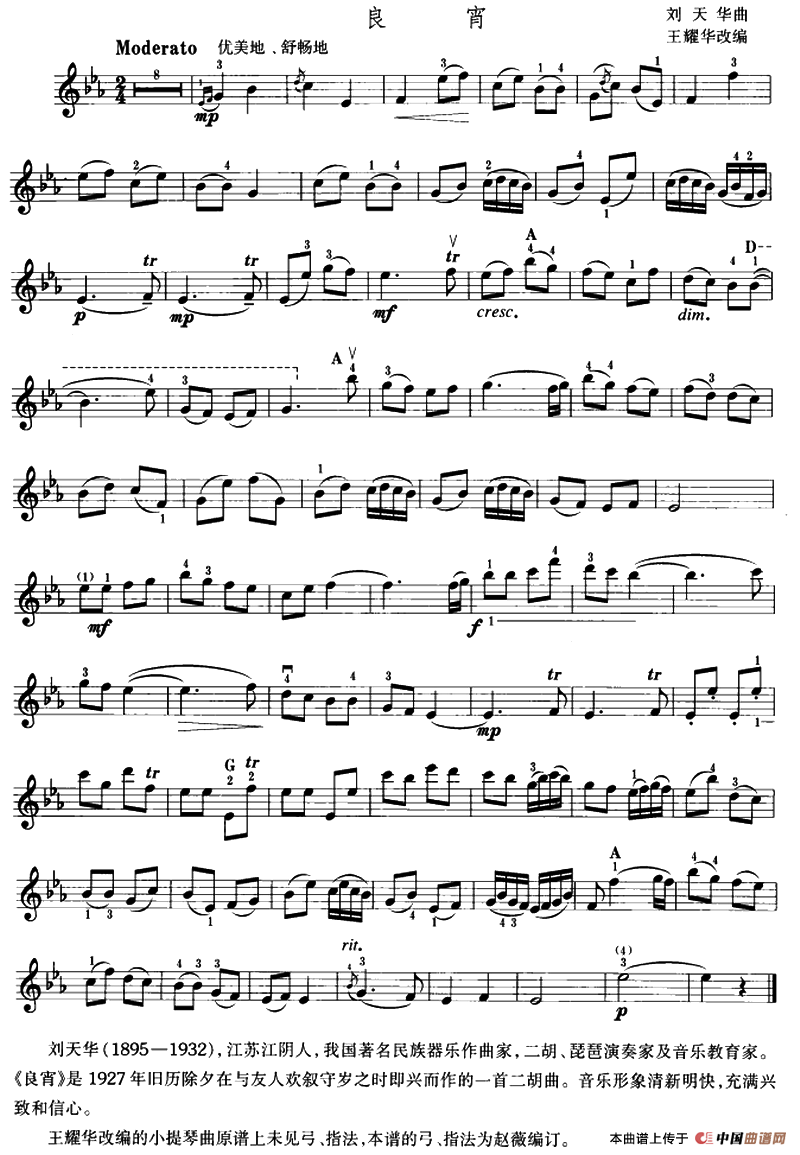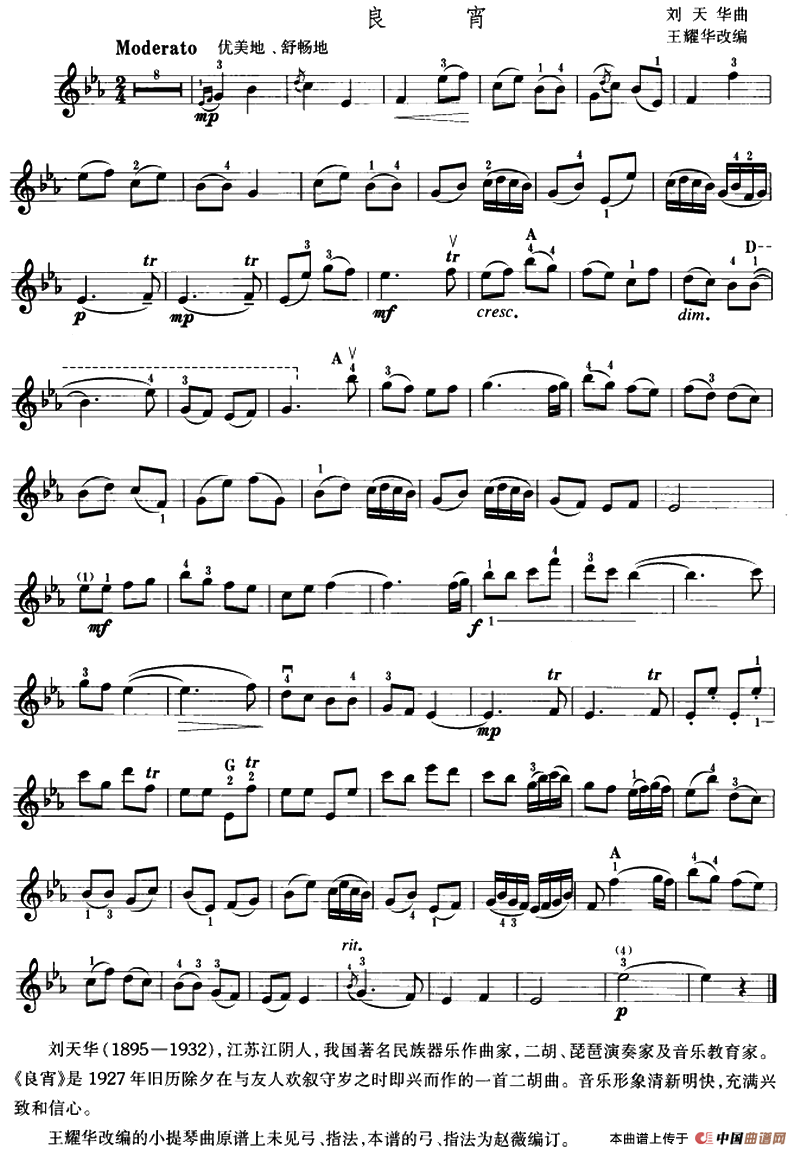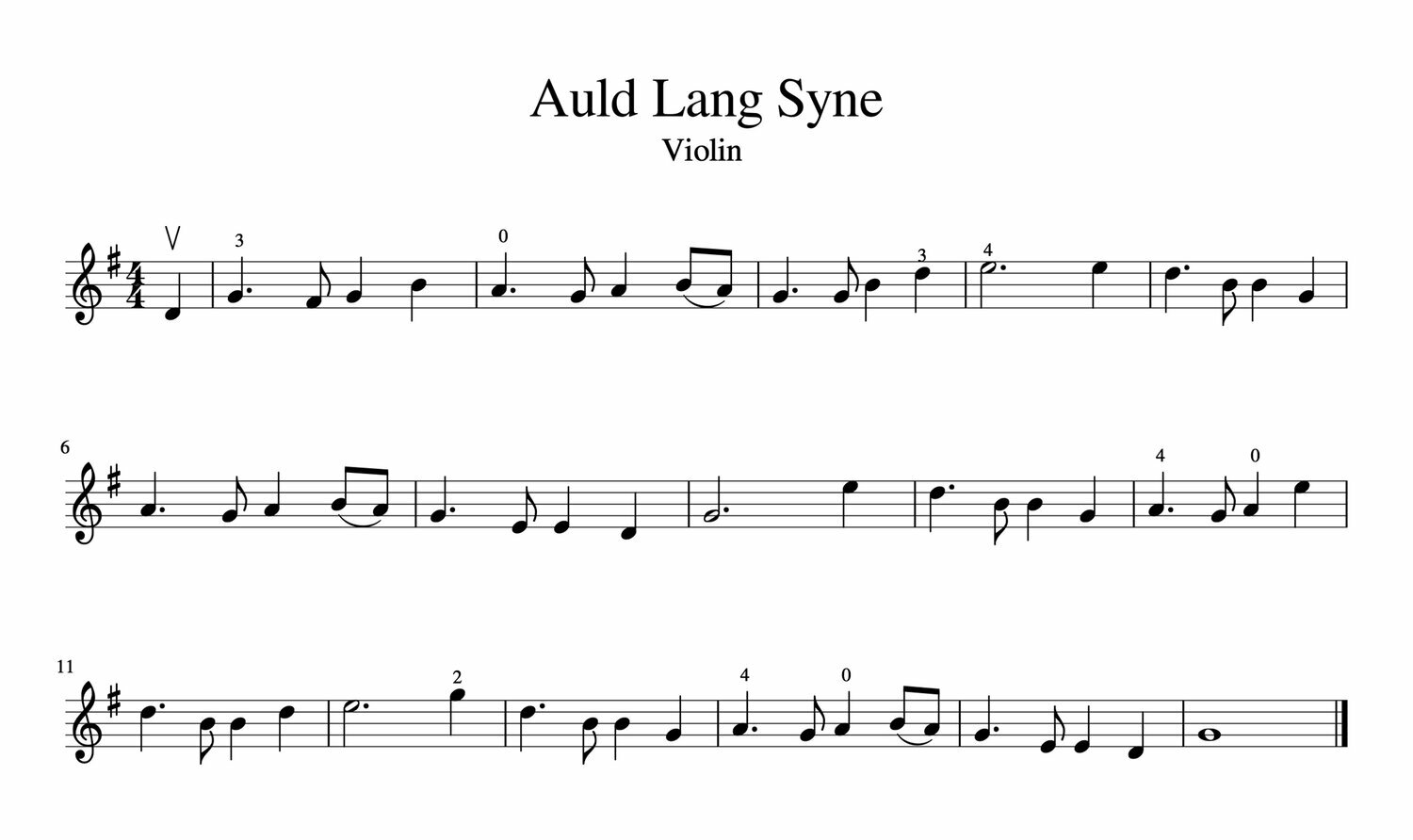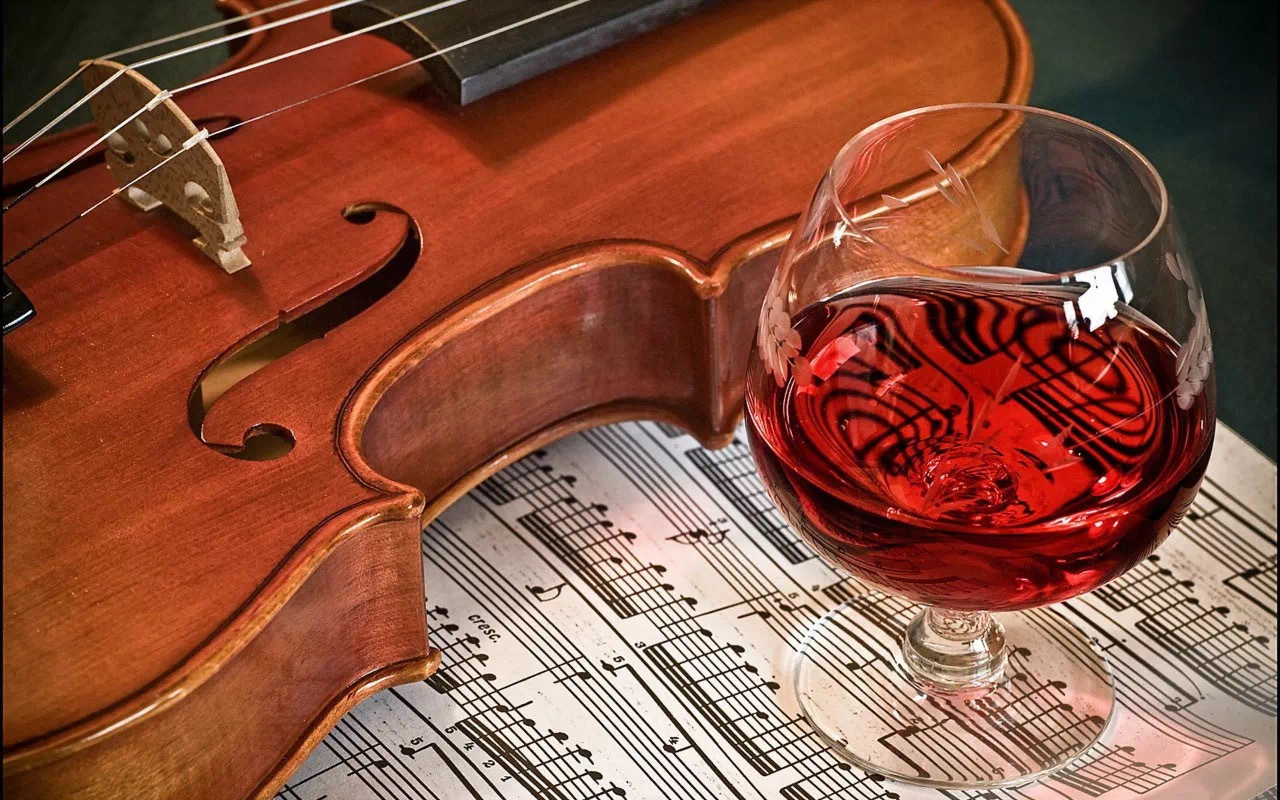
馬上,元旦和中國新年就要到來了,首先逆月音樂希望大家能有愉快的假期生活。
另外學習了一段時間的小提琴,你是否準備好給親戚朋友獻上最近的練習成果了呢?也許關於新年的曲目是不錯的選擇。所以逆月音樂為大家搜集整理了關於新年的小提琴曲以及曲譜,難點部分還配有講解和視頻示範哦!
一,《良宵》
《良宵》,原名《除夜小唱》,是中國近代音樂家劉天華於1928年除夕之夜創作的獨奏曲,小提琴為改編。該曲共分兩個部分,以優美的旋律,輕鬆的情緒,抒發了作者與友人歡敘守歲、共度良宵的愉悅心情;同時,表達了作者對美好未來的嚮往,以及對理想的追求 。
二,《新春樂》
《新春樂》是茅沅作詞填曲的歌曲,在眾多節慶音樂中,茅沅的小提琴獨奏曲《新春樂》猶如清新脱俗的春風,能不動聲色地浸潤你的心扉,洋溢着歡慶喜悦的春天氣息。
該小提琴曲的主題取自河北民歌《賣餃子》,又汲取了江南民間音樂明朗、樸素的音調素材。性格歡快活潑,原曲比較簡單,由於是小提琴獨奏曲,需要一些技巧,作者在這裏給它加了些花,因為中國人度春節有吃餃子的習慣,故起名為《新春樂》。有別於傳統的民族民間音樂,雖同樣採用具有濃郁地方特色的音調為素材,但在鋼琴伴奏下的主奏小提琴奏出輕快活潑的跳弓,使它沾了點洋氣和喜氣。同時,你又能呼吸到醇厚的鄉土氣息。這種汲取了西洋的創作手法,並以中國的民族音樂語彙寫成,用西洋樂器演奏的中國作品,早在三十年代就已十分普遍了,如賀綠汀的鋼琴曲《牧童短笛》、《搖籃曲》,馬思聰的小提琴曲《思鄉曲》、《塞外舞曲》等。
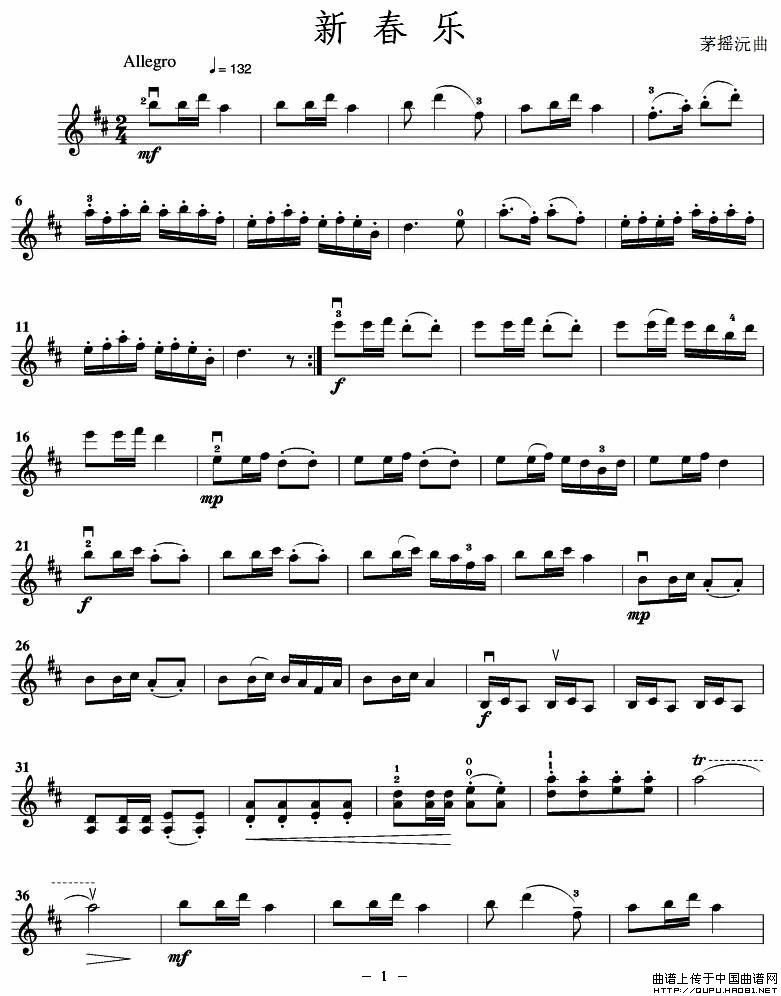

《新春樂》可分四個部分,一開始,小提琴就以靈巧的跳弓,奏出活潑、雀躍的第一主題,把人們歡度新春佳節的喜悦心情,表現得淋漓盡致。第二部分,樂曲轉向下屬調,鮮明對比於第一主題,變得委婉抒情,猶如擁有天籟之聲的歌手,盡情頌揚春天的來臨。第三部分,樂曲用變奏和雙音的手法將第一部分主題重複再現。第四部分,在原調上再現第二主題,並以絃樂器特有的長顫音和碎弓等技巧,將樂曲推向高潮。
樂曲充分運用了小提琴的各種表現手段,將人們在歡度佳節時的喜悦情景刻劃得惟妙惟肖,展現出一派春日融融,鳥語花香的新春景象,給人以美的享受。正如辭舊聲聲的爆竹,正如火樹銀花的煙花,正如兩千多年來傳統的風俗,仍把中國年渲染得喜氣洋洋。我想,最別緻的過年,莫過於讓自己安靜下來,下意識地讓音響裏流出清新、悠揚的《新春樂》,在明朗、樸素的曲風裏,順着歲月之河,將舊的一年隱沒在潺急、清麗的樂聲裏。
三,《恭喜恭喜》
初學的小朋友也可以練習表演啦!逆月音樂為大家整理的小提琴簡易版本《恭喜恭喜》,只有一把位的難度,初學幾個月的小朋友也可以嘗試。另外還給大家配有鋼琴伴奏,點擊即可進入鏈接。
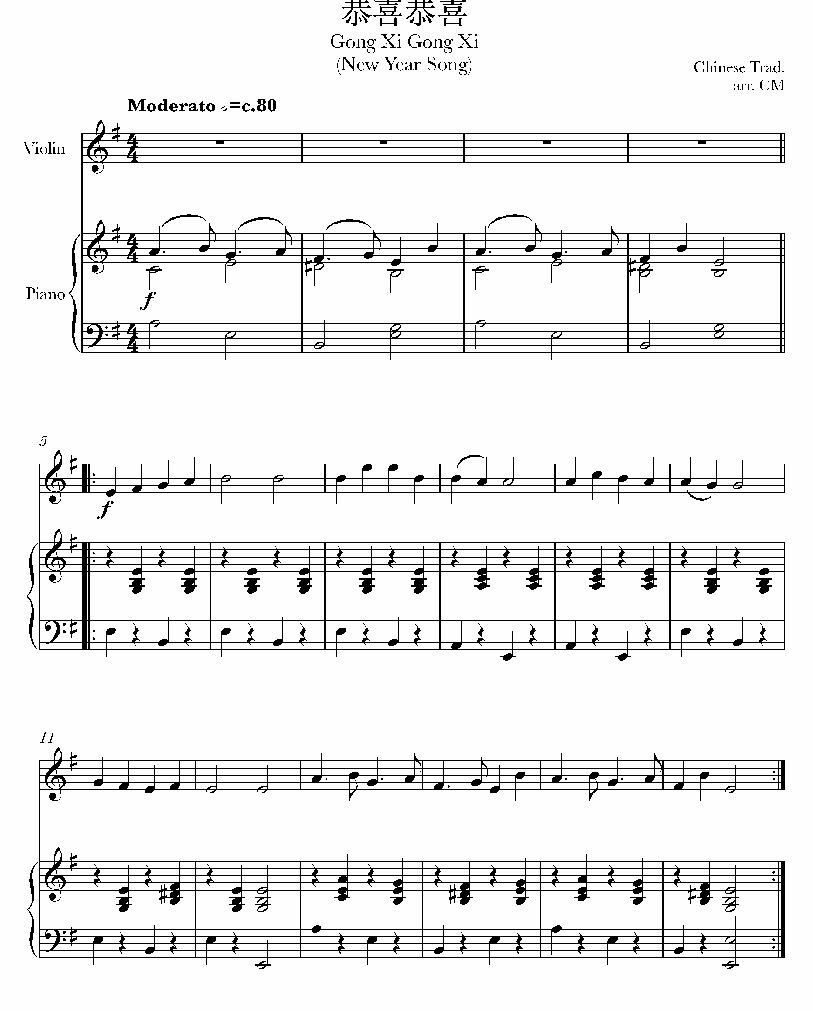
四,《友誼地久天長》Auld Lang Syne
原是蘇格蘭民間歌曲,即蘇格蘭蓋爾語:Auld Lang Syne,這是一首非常有名的詩歌,直譯為逝去已久的日子,在中國各地普遍稱為《友誼地久天長》。
Auld Lang Syne是由十八世紀蘇格蘭詩人羅伯特·彭斯(Robert Burns)根據當地父老口傳錄下的。這首詩後來被譜了樂曲,除了原文蓋爾語版本外,這首歌亦被許多國家譜上了當地語言,可以説是流傳廣泛,婦孺皆知,絕對是一首膾炙人口的世界經典名曲。

*****************************************************************************
English version
Soon, New Year's Day and Chinese New Year are coming. First of all, Niyue Music hopes that everyone can have a happy holiday life. In addition, violin, are you ready to present the latest practice results to relatives and friends, maybe the repertoire about the New Year is a good choice. Therefore, Niyue Music has collected and sorted out the violin music and sheet music about the New Year for everyone, and there are explanations and video demonstrations for the difficult parts!
1. "Good Night"
"Good Night", formerly known as "Big Night and Little Sing", is a solo piece composed by Liu Tianhua, a modern Chinese musician, on New Year's Eve in 1928, and the violin is an arrangement. The song is divided into two parts. With beautiful melody and relaxed emotions, it expresses the joyful mood of the author and his friends to celebrate the new year and spend a good night together; at the same time, it expresses the author's yearning for a better future and the pursuit of ideals.
2. "New Year's Eve"
"New Year's Music" is a song composed by Mao Yuan. Among the many festive music, Mao Yuan's violin solo "New Year's Music" is like a fresh and refined spring breeze, which can quietly infiltrate your heart and be filled with the joy of celebration. Spring breath.
The theme of this violin piece is taken from the folk song "Selling Dumplings" in Hebei, and it also draws on the bright and simple tone material of folk music in the south of the Yangtze River. The character is cheerful and lively, and the original song is relatively simple. Because it is a violin solo piece, it requires some skills. The author added some flowers to it here. Because Chinese people have the habit of eating dumplings during the Spring Festival, it is named "New Year's Music". Different from traditional ethnic folk music, although the tone with strong local characteristics is also used as the material, the lead violin under the accompaniment of the piano plays a brisk and lively jumping bow, which makes it a bit foreign and joyful. At the same time, you can breathe the mellow local flavor. This kind of Chinese works that absorbed Western creative techniques, written in Chinese national music vocabulary, and performed with Western instruments were very common as early as the 1930s, such as He Luting's piano pieces "Shepherd Boy Piccolo" and "Lullaby". , Ma Sicong's violin pieces "Homesickness", "Dance Beyond the Great Wall" and so on.
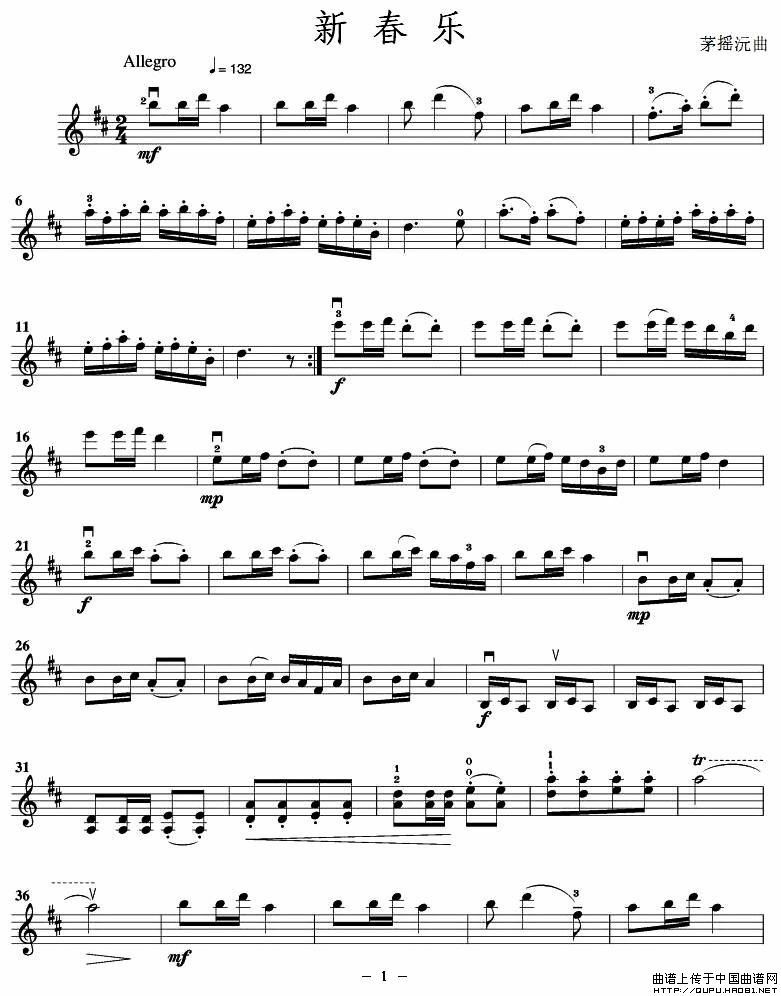
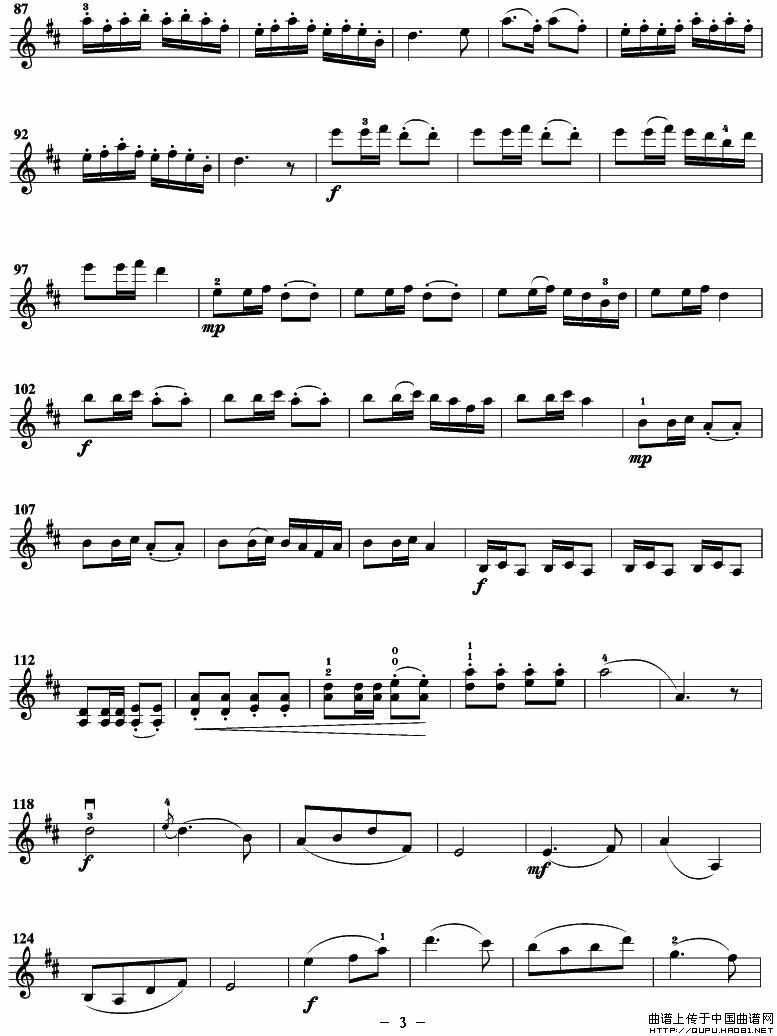
"New Year's Music" can be divided into four parts. At the beginning, the violin played the lively and joyful first theme with dexterous bow jumping, vividly expressing people's joyful mood to celebrate the Spring Festival. In the second part, the music turns to a subordinate key, which is in sharp contrast to the first theme, and becomes euphemistic and lyrical, like a singer with the voice of nature, praising the coming of spring. In the third part, the music reproduces the theme of the first part repeatedly by means of variations and double tones. In the fourth part, the second theme is reproduced in the original key, and the music is pushed to a climax with the unique long vibrato and broken bow skills of the cymbal instrument.
The music makes full use of various expressive means of the violin to vividly depict the joyful scenes of people celebrating the festival, presenting a scene of a happy spring, singing birds and fragrant flowers, giving people a beautiful enjoyment. Just like the firecrackers that say goodbye to the old days, just like the fireworks of fiery trees and silver flowers, just like the traditional customs of more than two thousand years, they still render the Chinese New Year joyously. I think that the most unique Chinese New Year is to calm yourself down and subconsciously let the fresh and melodious "New Year's Music" flow out of the speakers. In the clear and simple style of music, along the river of time, the old year Hidden in the urgent and beautiful music.
Three, "Congratulations"“GONG XI GONG XI”
Beginners can also practice acting! The simple version of the violin "Congratulations Congratulations" compiled by Niyue Music is only one bit difficult, and children who have only been learning for a few months can also try it. In addition, there is also a piano accompaniment for everyone, click to enter the link.
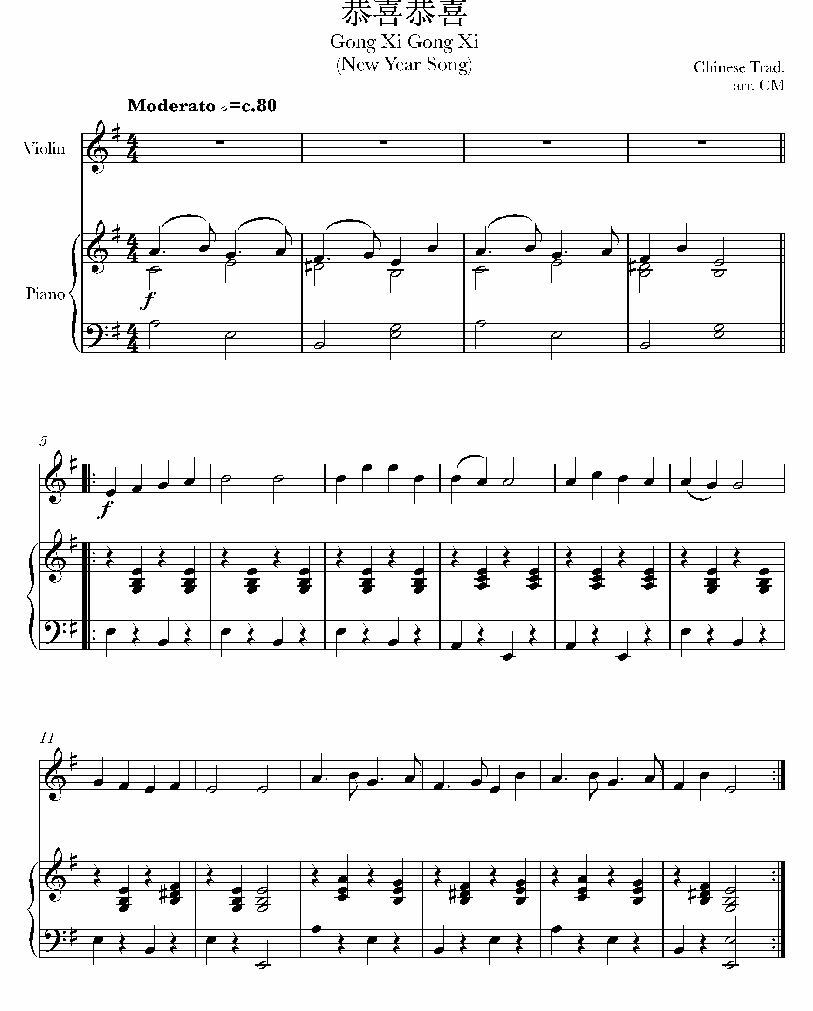
4. "Auld Lang Syne" Auld Lang Syne
It was originally a Scottish folk song, that is, Scottish Gaelic: Auld Lang Syne. This is a very famous poem, literally translated as long-gone days, and it is generally called "Auld Lang Syne" in various parts of China.
Auld Lang Syne was recorded by the 18th century Scottish poet Robert Burns according to oral traditions of local elders. This poem was later composed to music. In addition to the original Gaelic version, this song has also been recorded in local languages in many countries. It can be said that it is widely spread and well-known by women and children. It is definitely a world-famous classic.

